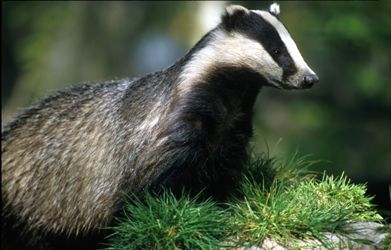In the 60 years of Queen Elizabeth II’s reign, mammal populations in Britain have undergone many changes. While some furry royal subjects such as rabbits and foxes have grown in numbers over the decades, other iconic native species such as the red squirrel and hedgehogs have suffered a dramatic decline. Mammals on Roads, an annual survey run by the People's Trust for Endangered Species (PTES), allows motorists, especially families travelling together by car, to record sightings of any mammals, dead or alive, that they spot from their vehicle, contributing towards the charity’s efforts to monitor the changing state of Britain’s mammals.
Wildlife enthusiasts can complete the survey via a printed pack or by downloading the Trust’s free Mammals on Roads app onto their iPhone. The app makes it easier to take part in the survey on the move: the location of sightings and the routes of participants’ journeys are recorded using the inbuilt GPS of iPhones. The information captured is then sent to the Mammals on Roads database and analysed by wildlife experts at PTES. Journeys that are repeated along the same route year on year especially provide important scientific data on changing populations.
PTES Surveys Officer David Wembridge says: “It is a sad fact that around one million mammals are killed on UK roads each year. However, roadkill provides wildlife experts with clues about the state of wild animal populations, as the proportion of dead animals relates to the number of those alive in the wild. Since the launch of Mammals on Roads in 2001, volunteers have surveyed over three-quarters of a million kilometres of road along the length and breadth of Britain. We hope that with the availability of the iPhone app in addition to the paper-based survey, even more people will take part and help us by surveying the country’s immense road network for signs of wildlife. In the last sixty years, our mammal populations have undergone huge changes, underlying the need for monitoring to in conservation.”
This Jubilee year marks the twelfth anniversary of the survey; continuous monitoring each year is vital to help the Trust build a more complete picture of the state of the UK’s wild mammal populations. A review of the results from Mammals on Roads
provided evidence that the hedgehog population had declined by a quarter over the last decade, leading PTES to initiate a campaign to protect the endangered animals.
Mammals on Roads is an annual survey and runs through July, August and September. The app, which was developed by Dr Brock Craft of the London Knowledge Lab and Dr Adam Talcott of Atomic Powered, is available to download for free at the App Store. Scan the above QR code for details on how to take part, or contact PTES or call 020 7498 4533 to request a printed survey pack.

How have the top mammals spotted on Britain’s roads fared during the Queen’s reign?
1. Rabbit (Oryctolagus cuniculus)
The rabbit population in 1952 was around 100 million (40 million were culled each year for meat and fur); the following year, myxomatosis was introduced and by 1955, 99% had been killed. Thirty years later, the population had grown to 20 million and today it is almost twice that (38 million).
2. Hedgehog (Erinaceus europaeus)
Burton, in 1969, estimated the population in the early 1950s to be 36.5 million in arable and pastoral land areas, although this was based largely on guesswork. Since then, there has been a steady decline. In 1995, the population in Great Britain was estimated to be 1.5 million, but over the last decade, counts of hedgehogs in Mammals on Roads have fallen by a quarter.
3. Squirrel (Sciurus)
Grey squirrels were introduced throughout the 19th and start of the 20th centuries. Their range expanded rapidly between 1930 and 1945. In the 1950s, a bounty system failed to reduce grey squirrel numbers or prevent their spread. By the early
1960s, only parts of Cumberland, East Anglia, north Lancashire and Westmorland remained largely uncolonised in England.
4. Badger (Meles meles)
In 1952, there were more badgers than there had been fifty years earlier, but in the 1960s and ‘70s, numbers fell as a result of continued persecution and the effect of insecticides such as dieldrin. The first legislation to protect badgers specifically was the Badgers Act 1973, which prohibited badger digging for sport. It was followed by the Protection of Badgers Act 1992, and from the1980s, the population has increased from about 190,000 to 300,000 today.
5. Fox (Vulpes vulpes)
Fox numbers in 1960 were very low, perhaps as a result of the loss of rabbits from myxomatosis, but the population recovered over the next thirty years and in 1990, the number of foxes killed per square kilometre was four times that killed in 1946 on the same estates. Since the 1990s, numbers have changed little.
Hedgehog image copyright Steven Oliver 300
